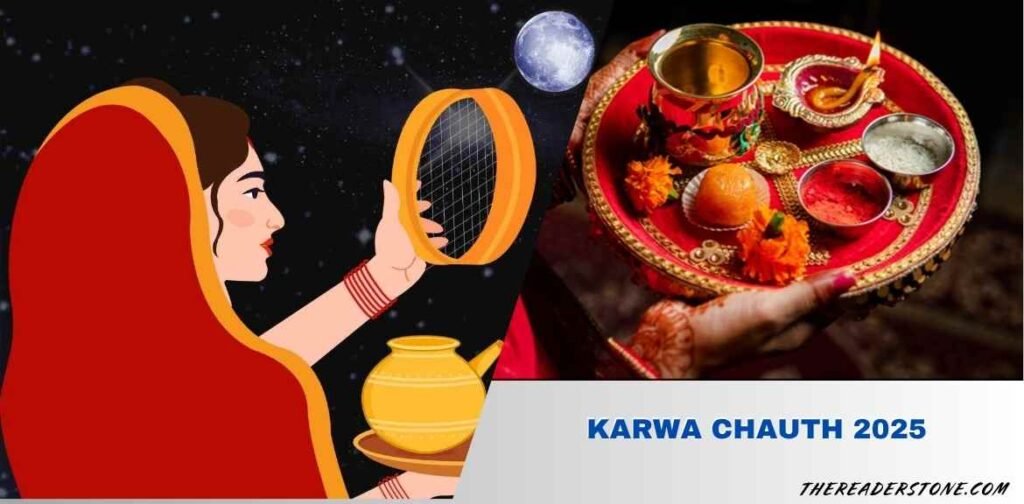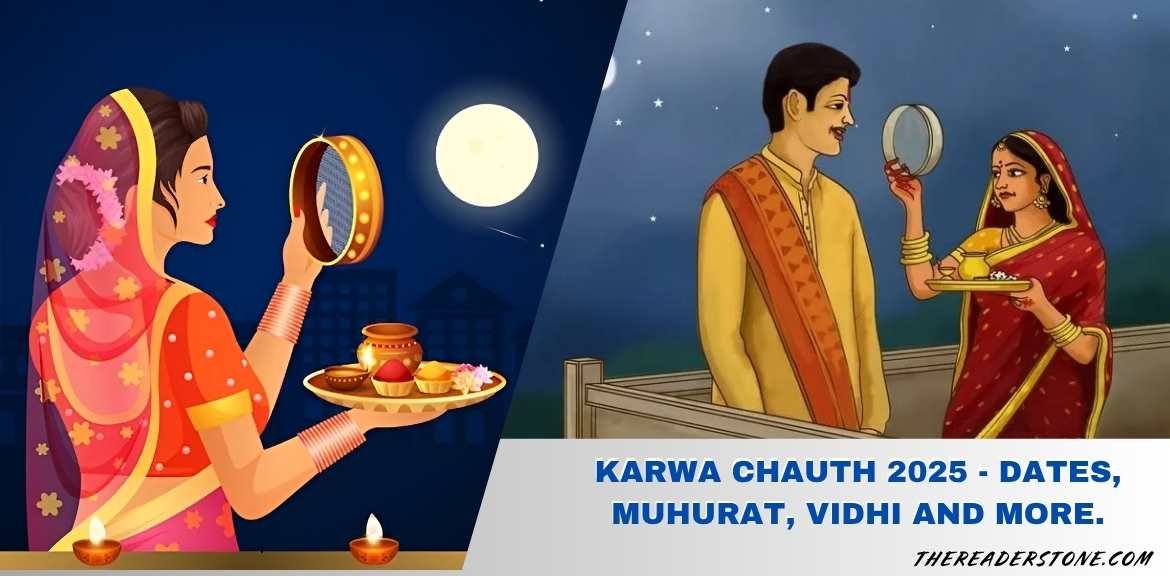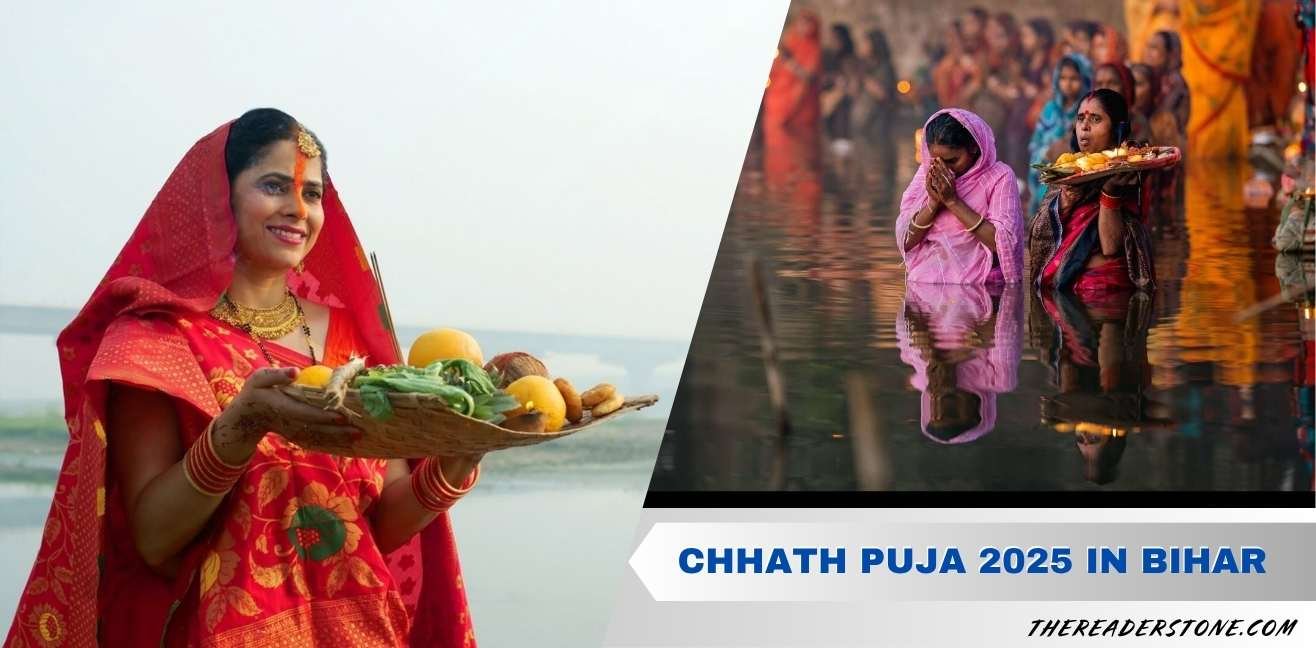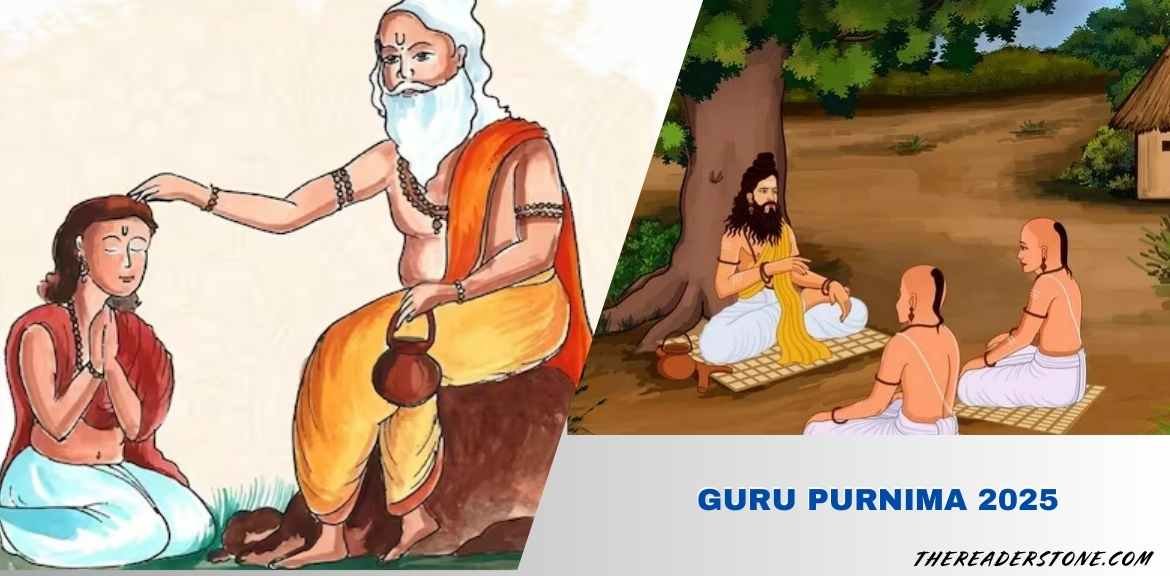India is renowned for its diversity of festivals. Some of the major ones include Diwali, Navratri, Holi, Durga Puja, Saawan, Karwa Chauth, and several more. Out of these festivals, Karwa Chauth is considered the most special and significant for married women. This article will cover details about Karwa Chauth 2025 date, muhurat, and other such things. Read on to find out more!
What is Karwa Chauth?
Karwa Chauth is a pretty significant Hindu festival that has been celebrated since time immemorial and by married women. The auspicious Hindu festival is celebrated very widely in Northern and Western India and also in some parts of Nepal.
Every year, the festival is held and observed on the fourth day of the fortnight. That is known as Krishna Paksha in the month of Kartika. In the Gregorian calendar, this occurs around October to November.
The festival’s name originates from the words ‘Karwa’, which means an earthen pot that is used in rituals, and ‘Chauth’, which means the fourth day or chaturthi of the lunar phase.
Karwa Chauth 2025 Date
This year, Karva Chauth is falling on Friday, 10th October. This will be marked by a day-long fast held by married women and special puja rituals.
Shubh Muhurat of Karwa Chauth 2025
The shubh muhurat for the puja is from 5:57 PM to 7:11 PM Indian Standard Time. Key timings for the puja include:
- Puja Muhurat: 5:57 PM to 7:11 PM
- Moonrise Muhurat: 8:12 to 8:13 PM
Karwa Chauth 2025: Rituals and Vidhi

Karwa Chauth, as you know, is celebrated by married women who do a day-long fast. The rituals and vidhi are enumerated as below:
- Sargi (Pre-dawn meal): The day starts very early in the morning with women eating sargi, which is a special meal prepared by their mother-in-law before sunrise. This meal normally includes fruits, sweets, and dry fruits that nourish the bride enough for the upcoming fast.
- Fast: Once the sargi is done, women observe a strict nirjala vrat, which is a fast without even water. This fast is kept until the moon rises that evening, which is when the fast is broken.
- Adorning: Towards the evening, married women freshen up, bathe, and dress up in traditional attire, especially in red and festive clothing. Women get decked up in jewelry and apply sindoor with a mangalsutra.
- Puja Preparation: The puja area is cleaned up and decorated, and women prepare a puja thali with typical ritual items like an earthen pot, diya, flowers, fruits, sweets, incense sticks, kumkum, roli, and water. They can add more things well, but these are typical.
- Karwa Chauth Puja: Once the prep is done, the women can either individually or together with others, gather around the setup. Images of Goddess Parvati and Lord Shiva are venerated, and the Karwa Chauth katha is recited, which is then followed by prayers.
- Feri Ceremony: Once the puja is complete, women exchange their decorated karwa or thalis and sing traditional songs
- Moonrise Ritual: When the moon fully appears, women stand with their puja thali, face the moon, and look at the moon through a sieve before breaking the fast.
What not to do during this period
- Do not eat or drink anything after sunrise until moonrise, as this is generally observed without water or food.
- Don’t wear inauspicious colors like black, blue, white, or grey. Wear colors like red, pink, yellow, orange, or green.
- Meals that you eat before or after the fast should be sautvik, or purely vegetarian.
- Don’t use sharp objects like scissors, needles, and knives. It is not recommended to cut hair or nails.
- Stay away from intense physical activity, avoid intimacy, and abstain from anything externally intense.
- Don’t use a broken or chipped karwa, as this is inauspicious.
- Menstruating women may follow the rituals, but pregnant women should not.
- Don’t use harsh language or tone.
The auspicious festival is highlighted as a day of prayers, with a day-long fast observed by married women starting from sunrise to moonrise, and they pray for the safety, well-being, and overall longevity of their husbands.
Read More- Guru Purnima 2025: Date, Timings, and Significance of the Festival
Refresh Date: August 21, 2025








